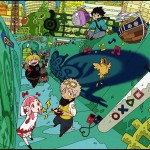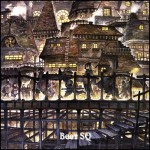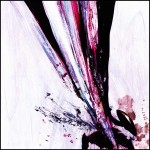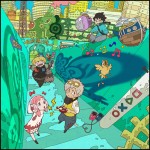I nearly lost it when Theatrhythm was announced for the Nintendo 3DS. I was already excited about the 3D visuals offered up by the platform, and a dream game combining the music of Final Fantasy with rhythmic elements was not only completely unexpected, but was seemingly too good to be true. But true it was, and I watched the game closely leading up to its release.
Now it’s here, and I’ve had a lot of time to play it. Complaints are already flying that the game is built as a DLC platform, but is the game a whole lot more than that, and does it pave the way for other exciting Theatrhythm games encompassing other Square Enix franchises?
Check out our review after the jump.
Theatrhythm is your typical rhythm game with RPG elements overlaid. There are three types of stages, including field, battle, and event scenarios that each get different types of songs (event scenarios, for example, are intended to feature emotional cues that draw out the essence of that game’s respective story through its visuals and music). Players tap, drag, and swipe in time with the music to visual cues on the screen.
The stage types differ a bit in how they’re played. Battle themes sport four rows of notes that move from left to right, essentially allowing each member of the party to perform an attack when notes are hit correctly. Field themes also move from left to right, and emphasize tapping and holding notes along a path. Event sequences kind of move all over the screen, which actually makes it rather difficult to see the underlying visuals as your eyes are constantly following the random path on-screen to the next note.
Modes include series, allowing players to visit the thirteen core Final Fantasy titles by experiencing the introduction, corresponding battle, field, and event scenes, and an ending sequence. Beginning and ending sequences offer up a bit of story from the game while players tap in time with the music to accumulate Rhythmia, the game’s point system. There’s a challenge mode where players can play each stage individually in beginner, expert, and ultimate difficulties (unfortunately no opening/ending sequences), and the multi or single-player Chaos Temple where two stages are faced back-to-back with the opportunity to acquire special items.
Getting into the game’s RPG elements, each core Final Fantasy title has its main character featured, and players can select a party of four and change at any time. Characters each have different abilities, such as magic attacks to further damage enemies in battle stages and stat boosts like agility (important for field stages), for example. As players complete stages, characters gain experience, leveling up and acquiring new abilities, as well as Rhythmia which is used to unlock key events in the game.
Personally, while the skills are pretty cool, I didn’t care much for the party system. I chose my four characters and stuck with them throughout the entire game, maxing them out and living with their set of abilities. Others may want to customize their parties for each stage type to maximize the rewards for each stage.
About that, players succeed at battle stages by defeating as many enemies as possible. Damage is dealt to enemies by performing notes correctly, and damage is done to the player by missing notes (depleting your HP bar results in failing the stage). The higher the attack rating of the characters and the more abilities used that deal further damage, the more likely it is that you’ll defeat the sequence of enemies presented in each stage. Each stage also has a boss enemy that is related to the game that the song is from, which gives players even more drops and experience if they’re able to defeat them before the stage ends. In field stages, characters with agility move more swiftly, walking further, and, in the case of the Chaos Temple, unlocking alternate bosses for the following battle stage (Chaos Temple stages are always presented as a field theme followed by a battle theme).
Items that are collected include potions and scrolls that give players benefits in battle as well as collectible cards and various colored shards that unlock additional playable characters. These items are also unlocked as players accumulate 500 increments of Rhythmia, but you’ll find yourself wanting to challenge the alternate bosses in the Chaos Temple to acquire even more valuable drops, including the aforementioned shards.
At some point, players acquire enough Rhythmia to challenge the game’s final boss. There’s a credit sequence that follows, but players are then able to continue on with the game. Once you max out your party, you may want to swap in new characters to level them up, or you can try to beat all the challenge stages on the ultimate setting. Some of the stages get pretty challenging, and you’ll feel like you’ve really accomplished something if you’re able to beat them. There are movies, music, profile customization templates that are viewed when you share your character via Street Pass (had a blast with this at Comic Con), and tons of other items to collect, leaving a lot to do for completionists out there.
Let’s talk about the music. Initially I was disappointed that so much of the early Final Fantasy music was left intact rather than being arranged, but as a game that pays homage to the music of the series, I wouldn’t want it any other way now. They’ve done a great job selecting key pieces from the thirteen Final Fantasy games, and other songs will be unlocked as players progress. I also love the fact that there are various themes used throughout all of the menus that not only energize but also instill a lot of nostalgia which is what this game is all about.
The Chaos Temple also allows players to experience new songs that are eventually unlockable, but you will admittedly find a lot of repeats. Still, I can’t argue with the fact that this game is built for DLC, and a slew of songs are already available for purchase for games outside of the core Final Fantasy series.
I also want to mention sound. I love the retro sound effects in the game, although they’re crazy-loud when you’re actually in the middle of a stage. Fortunately you can turn them down. In particular, though, I love the sound effects during the summon portions of the battle stages (unlockable if you perform well on the preceding ‘feature zone
Another important discussion for a rhythm game is note placement. For the most part, Theatrhythm does well, offering a nice blend of rhythm and challenge, although I found myself on a few occasions getting into a groove and tapping only to find that the note placement was following some other rhythm that I wasn’t expecting. Those instances are rare, but are really frustrating. I have cleared all of the stages on ultimate, however, and recommend playing on a level surface and with a full-sized stylus.
At its most difficult, in addition to rapid tapping and crazy swiping sequences, the later stages of the Chaos Temple having rotating arrows that players must estimate the swipe direction at the time it passes the right side of the screen. They’re pretty nuts, but are always the same, so you’ll get comfortable with them on multiple play throughs.
I do have to say that the game’s kiddie visual style isn’t really my thing. That’s fine though, as it’s meant to be a lighthearted experience. You will, however, want to turn the 3D effects off completely because you’ll be constantly tapping and moving the system as you play, losing your focus on the 3D vision, which is a shame given that it’s on the 3DS.
Overall, I’m happy with Theatrhythm. They did a great job with song selection and the gameplay is mostly solid. Those are the two most important factors for a rhythm game. It’s unfortunate that the event stages are so difficult to enjoy given that the visual sequence in the background tends to be forgotten while you frantically search for where the next note will appear (also strange to have battles in the background during “Theme of Love” from Final Fantasy IV), but I had a blast with the battle themes in particular. Not everything is perfect, as you will quickly get tired of playing the same stages over and over again, but the DLC and unlockable content should keep things fresh for awhile.
I hope Theatrhythm Final Fantasy does well and that its success drives the team to put together other Theatrhythm titles. People have mentioned Theatrhythm Dragon Quest (which will never happen because Sugiyama owns all of his music), but I’d love to see Theatrhythm Seiken Densetsu or Theatrhythm Chrono.
Now that the game’s out, I’m sure many of you out there also have thoughts on it. Please feel free to chime in. Any songs that you think are sorely lacking? Got a score on a stage that you want to brag about? Let us know!
Tags: Final Fantasy, Game Reviews, Music Reviews, Reviews, Rhythm, Square Enix, Theatrhythm: Final Fantasy, Video












































Oh man … a Theathrhythm Yasunori Mitsuda would be amazing.
Wow, I didn’t even think of other Square games with this. Really want to get this.